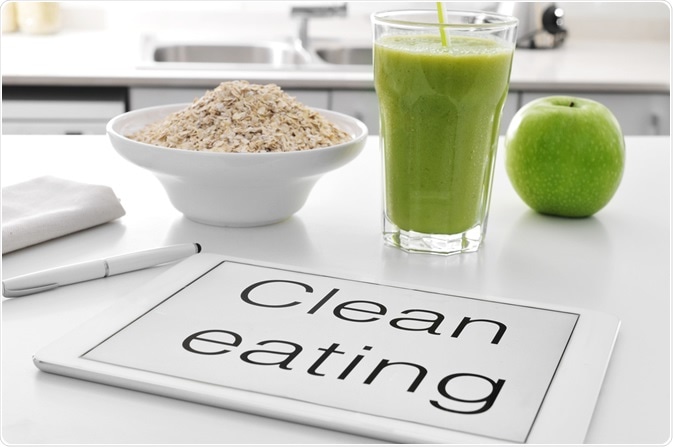For The Latest Medical News, Health News, Research News, COVID-19 News, Pharma News, Glaucoma News, Diabetes News, Herb News, Phytochemical News, Thailand Cannabis News, Cancer News, Doctor News, Thailand Hospital News, Oral Cancer News, Thailand Doctors
Clean eating is all the rage in the United States and some other developed economies. Some foodies are so enamored of this trend that they may look down on anyone who doesn’t quite share this enthusiasm. It is difficult, however, to pin down what clean food means, because different groups may define it differently.

The most frequently accepted connotation might be that clean food, also sometimes called real food or natural food, is any food that:
A clean diet might consist of various combinations of food groups, such as organic whole grains, raw or lightly cooked vegetables, fruits, nuts, water, herbs, and green tea.
Some things that are likely to be found on the table of clean food eaters are:
Clean food will automatically exclude the following:
Include adequate protein and carbohydrates in the diet, from pulses, dairy, and whole grains. Whole grains have a mild, slow, impact on blood glucose, unlike refined sugar.
Protein is essential for healthy tissue repair in the body and is especially necessary in children and adolescents, to promote healthy growth and activity. The healthy carbohydrates found in whole grains and fruits are required to provide the body’s cells with sufficient energy to keep metabolism running smoothly.
Enjoy your food and don’t think of it as just fuel. Food doesn’t make you better, just healthier, if it’s eaten in the right quantity and from the right food groups.Make sure the diet is rich enough in calories to account for your daily activity level, and that this is in accordance with your ideal body mass index.
Eat in company; eat with love; build your own style of eating without making others feel uncomfortable about their meals.
If you spend all your time scanning labels, it’s time to loosen up! Food is important, but enjoying life is too.
Reduce salt and sugar in your food by choosing lightly-processed foods when you shop. Train yourself to select vegetable fingers or fruit as snacks instead of fried sweets or baked goodies. Remember that potatoes are, in effect, the equivalent of sugar because they drive up blood glucose – fast!
Try to make your food look and taste good without adding unhealthy flavorings, by using small amounts of spices or herbs such as ginger, garlic, basil, paprika, and onions.
Vary your meals to avoid monotony and food cravings. If it’s brown rice with a vegetable salad one day, try a whole-grain savory quinoa-lentil mix the next with a banana for dessert, or a handful of nuts and fresh fruits.
Go slow, give yourself time to experiment, be flexible, and remember that the world will go on even if you did have a cookie today. The important thing is not being able to avoid ever eating anything unhealthy, but being able to stop with just one – or even just a taste.
Eat more fiber-rich vegetables paired with whole grains, but don’t forget to include pulses, milk, or yogurt, for protein.
Clean eating has numerous advantages on overall health – it benefits by reducing the amount of fat, salt, sugar and chemical additives in food. This can help arrest the epidemic of obesity, diabetes, hypertension, malignancies, and senile dementia that are rocking societies which over-indulge in this kind of diet. However, clean eating has its dark side as well; it can capture total allegiance, making eating clean the focus of one’s life.
The emerging diagnosis of orthorexia nervosa shows how the concept of eating real food can get out of control in the hands of a person who is obsessive, insecure, and trying to gain self-esteem and control over life through strict adherence to self-made norms.
Overemphasizing this aspect of life can lead to stress, social isolation, a critical spirit, broken relationships, and even malnutrition. Such a rigid worship of certain types of food alone as clean or healing food is unnecessary.
Clean eating is directed at the health of the total person, but is only a part to be considered. It should be coupled with equal or more attention to relationships, personal skill and talent development, emotional and spiritual growth, pursuit of hobbies and interests, and a love of life that encompasses what is lawfully available and compatible with one’s good.